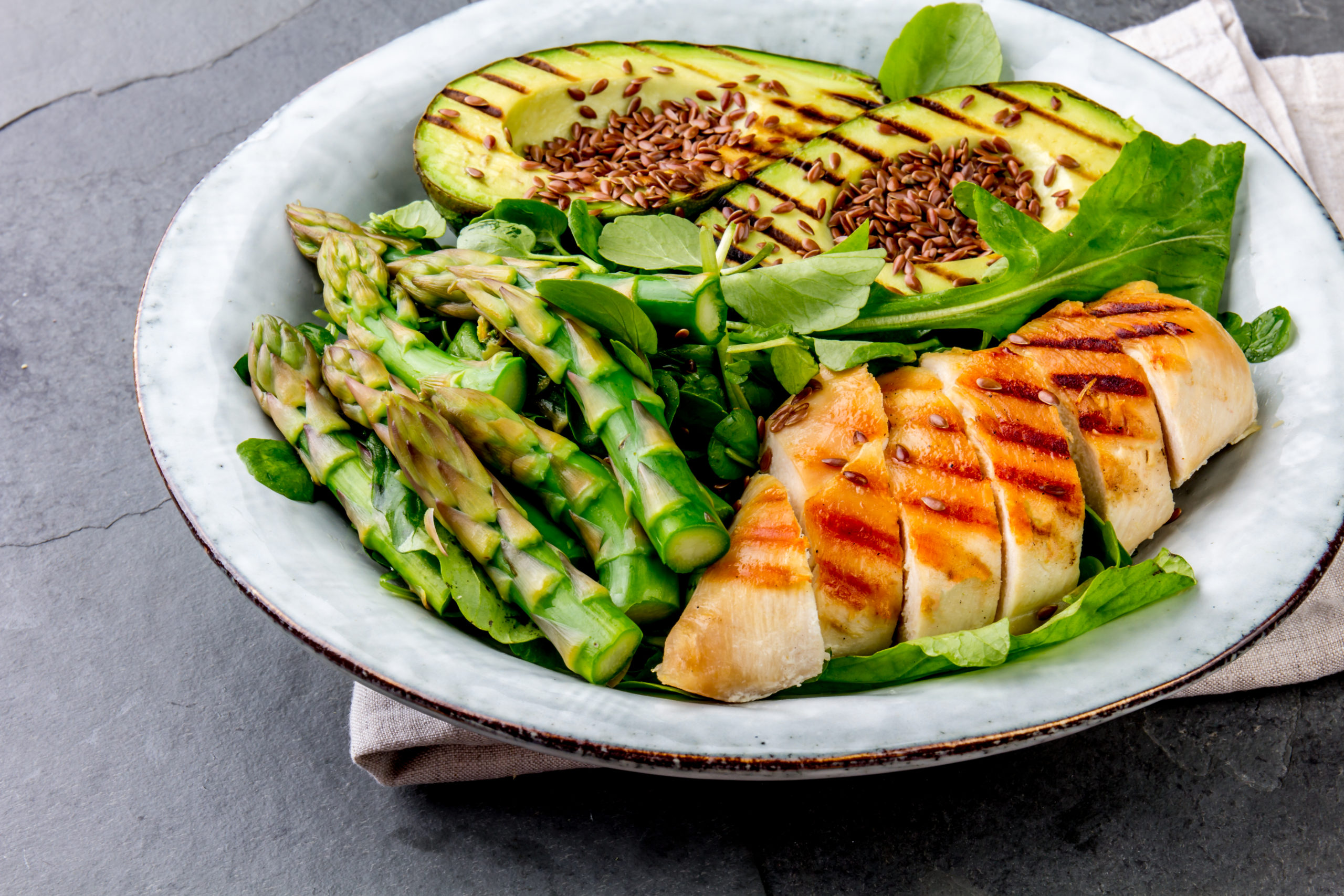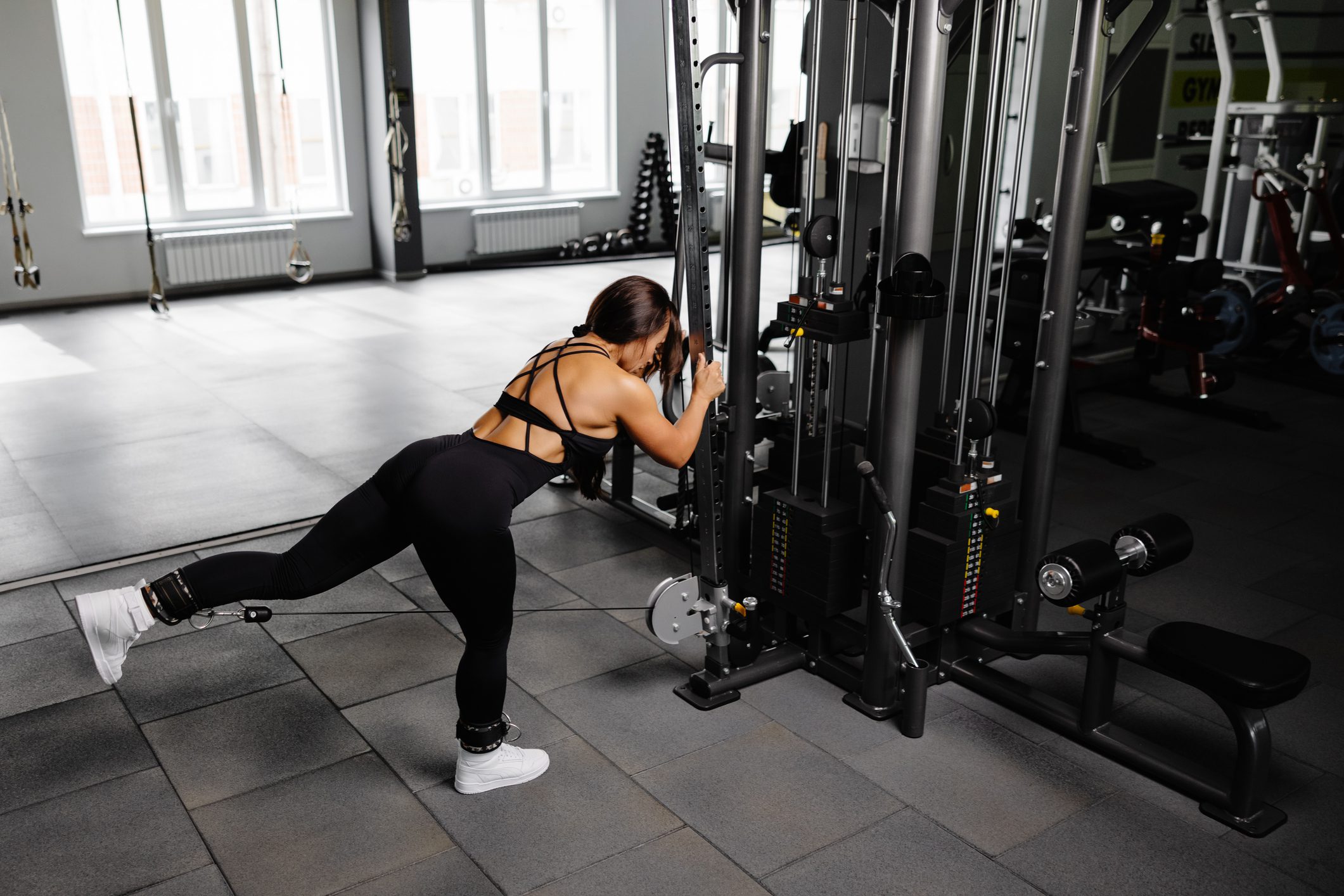One of the most powerful tools to eliminate food intolerances and be a better fat burner is the Virgin Diet Plate. I’ve designed the Plate to improve satiety, reduce hunger between meals, and create steady, sustained energy and focus.
When you eat according to the Virgin Diet Plate, you’re not going to be chased by cravings all day. You can effortlessly go 4–6 hours between meals. Because you’re eating anti-inflammatory foods, you heal your gut, support your immune system, and optimize your body’s ability to burn fat.
The Virgin Diet Plate is incredibly versatile, too. Whether you’re vegan or following the paleo diet, you can custom-design that Plate to work for you.
Each macronutrient on the Plate—carbohydrates, protein, and fat—creates its own hormonal response, depending on the quality, timing, and amount you eat. Let’s briefly look at each of these, and how these foods make you the best fat burner.
Carbohydrates
Carbohydrates encompass a wide range of foods. Sometimes, they unfairly get a bad rep. Cauliflower and ice cream are both carbohydrates, but you know which one is healthy, right?
Carbs are a source of energy, too. They trigger the release of insulin to help absorb glucose from your blood and move it into your cells, where it’s stored as glycogen or fat. Far from making you fat, the right carbs make you a better fat burner.
With the Plate, you’re getting most of your carbs from two sources:
- Non-starchy veggies. These should take up the most space on your Plate. You’ve got so many options, including leafy greens and cruciferous vegetables. Mix it up at each meal with creative and colorful choices!
- Slow, low carbs. I call these slow because they are higher in fiber, which means that their sugar is released more slowly. They’re low because they are generally lower on the glycemic index. My favorites include black beans, butternut squash, cranberries, hummus, kabocha squash, lentils, quinoa, raspberries, tomatoes, and wild rice.
Both non-starchy veggies and slow, low carbs are loaded with fiber. (So are some other foods on this list, including avocado, nuts, and seeds.) Fiber has long been my needle mover to crush cravings and hunger, feel full faster, and support gut health so you become a better fat burner.
My goal is for you to eat 50 grams of fiber a day. If you’re like most people, you’re probably currently only getting 5 to 14 grams a day.
Please don’t go from 14 grams to 50 grams overnight! Be patient, increase your fiber intake slowly (say, in 5-gram increments), and drink plenty of water while you do. It may take you 1 to 2 weeks to get there. If you ramp up too fast, you could find yourself dealing with occasional gas, bloating, diarrhea, or constipation.
How Many Carbs Should I Eat?
- Non-starchy veggies. The more non-starchy veggies you eat, the better, considering all the phytonutrients, fiber, and bulk they’ll add into your diet. Shoot for 5 to 10 or more servings a day. At a minimum, I want you to get 2 or more servings at every meal (using ½ cup cooked or 1 cup raw as a serving size).
- Slow, low carbs. 1–2 servings of high-fiber starchy carbs per meal (using ½ cup cooked as a serving). Larger or more athletic men can have 3 servings per meal. A serving size would be:
- ½ cup cooked beans, quinoa, wild rice, or legumes
- 1 cup fruit or tomatoes
Protein
Proteins are the building blocks of lean muscle tissue. They support satiety by slowing down stomach emptying, which suppresses your hunger hormone ghrelin. The amino acids from protein support a healthy immune system. Eating enough protein makes you a better fat burner, too.
Your protein requirement isn’t static. Your weight and body composition will influence the amount of protein you need. So will your age (I find people 60 and older do better with slightly more protein), stress levels, and how intensely you exercise.
When you choose protein from animal sources, go for the cleanest ones. I’m talking about organic, free-range, cage-free, grass-fed, and no-hormones-added sources whenever possible.
What if you’re vegetarian or vegan? The challenge is getting enough protein without overdosing on carbs or fat. Ideally, you’ll get the protein you need by combining nuts and seeds with grains and legumes.
If you eat a paleo or keto diet that incorporates animal foods, my Paleo-Inspired All-in-1 Shakes provide bone broth without the hassle. We use HydroBEEF™, a highly concentrated beef protein sourced from animals raised in Sweden.
For optimal protein as a vegan or vegetarian, I also highly recommend my Plant-Based Shakes, which contain a protein blend (as pea protein, chia protein, and chlorella protein). Every serving contains an impressive 22 grams of high-quality protein that can sometimes be hard to get on vegan or vegetarian diets.
How Much Protein Do I Need?
In general, the average woman should get 75–80 grams of protein a day. Most men should get 100–120 grams a day. This is based on average size (160 pounds for a woman and 200 pounds for a man).
Every meal should contain at least 20–30 grams of protein. If you’re a guy, athletic, or older, you’ll probably need more.
One serving of clean, lean protein is about:
- 4–6 ounces of fish, chicken, turkey, or grass-fed beef for women.
- For guys, that’s about 6–8 ounces.
Fat
The 1980s saw some great things… and some not-so-great things. Acid-washed jeans, bleached feathered hair, and low-fat diets are relics best left to the past.
Like carbohydrates, dietary fat unfairly gets a bad rap even today. Yes, there are bad fats, including those nasty vegetable oils that line grocery store shelves and trans fats, which still sneak into processed foods in small amounts. (The only healthy amount of trans and other bad fats is zero.)
When I say fats, I’m talking about the healthy fats that keep you full, focused, and healthy. I’m not talking about the nasty, inflammatory fats in vegetable oils, damaged fats like scrambled eggs on the buffet table, or the trans fats that sometimes still hide in processed foods.
Healthy fats like avocado and olive oil reduce your appetite by signaling satiety signals. They also help to stabilize your blood sugar by slowing the release of sugar into your bloodstream. Because you don’t trigger a surge of insulin, your blood sugar doesn’t drop too low.
When you eat healthy fat, you’re actually burning fat and not sugar! Your body thrives on good fats. You’ll be a better fat burner and reduce the chronic inflammation that locks the doors on fat cells.
How Much Fat Should I Eat?
Ideally, you should have 2–3 servings of healthy fats at every meal. Men and athletic women can go up to 4.
One serving of healthy fat should be about 100 calories. Some examples of one serving include:
- 1 tablespoon olive oil
- ¼ avocado
- 4 ounces cold-water fish
- 5–10 nuts
- 1 tablespoon nut butter
- 10 olives
Pulling Everything Together: The Perfect Plate
Of course, you don’t normally eat macronutrients in isolation. You eat food.
On the Virgin Diet Plate, you’re going to incorporate plenty of foods that are anti-inflammatory, that give you steady energy levels, that balance blood sugar levels, and that make you the best fat burner.
Imagine dividing your Plate into two halves. Here’s how that Plate should look:
- About ¼ of your plate should contain protein.
- About ¼ of your plate should contain healthy fats.
- On the other half of the plate, about ⅔ should be non-starchy veggies.
- The remainder on the other half of your plate should be slow, low carbs.
Every Plate should look something like this:

One thing to keep in mind is that your protein and fat amounts may overlap. Foods like wild-caught seafood and grass-fed beef contain both.
By the way, here’s my favorite Plate:
- Grass-fed beef fillet
- ½ sweet potato
- Asparagus, lightly sautéed with olive oil
- Garlic and sea salt
What About If I’m Making A Salad Out of the Plate?
You can use the same Plate approach!
- Start with dark, leafy greens.
- Add chopped or julienned non-starchy veggies.
- Throw in some slow, low carbs.
- Add protein.
- Add healthy fat (nuts, avocado and/or dressing).
- Dress and season.
You can also take the Plate approach with a stew or wrap! Remember, convenience and simplicity are the keys here. Once you get the hang of this, you can easily gauge how much you’re getting without measuring or counting food.
One final thing about meal timing: Close the kitchen and stop eating 3 hours before bed (no, you cannot just go to bed later!).
Ideally, I’d like you to have at least a 12-hour span between dinner and breakfast to get all of the fabulous benefits of intermittent fasting. To do that, simply push breakfast back till 9 or 10 a.m. the following morning. (But no skipping breakfast!)





